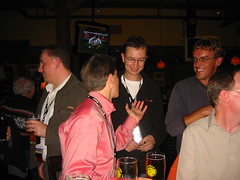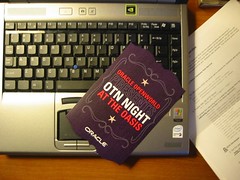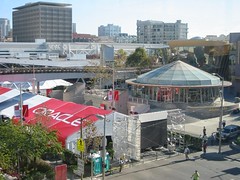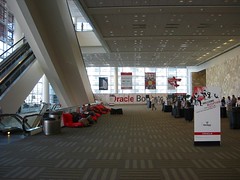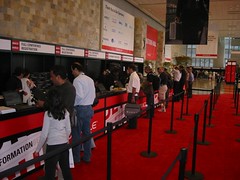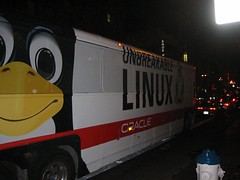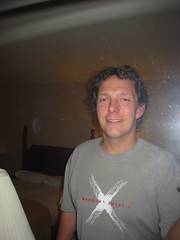
Been there, got the t-shirt - though not the snazzy grey laptop bag (as I was too cheap to throw down the wonga for the full package.)
Today was the first day of the X Treme training I had booked ahead of the main conference.
With a name like 'X Treme Program' you would be forgiven for thinking that there these sessions were going to have some fairly inventive and intense teaching strategies in play a la 'Extreme Programming'. No such luck. It would be fair to say that we were presented with screeds of printed instructions and then allowed to work through them. There were no demos, for example, of cool things that can be done with the product, nor any real discussion of what it can do. There were staff on hand (from, I believe the OWB development team) the whole time who were very responsive to anyone who raised their hand, but, as one of my colleagues said to me, we could have just done this at home.
I was disappointed to discover that the first exercise I attempted could not be completed due to errors in the setup of machine image. Then later I had to fix a number of permissions issues in the demo databases. Not such an onerous task but it was still more time taken out from following the course notes. These are a telephone book-sized manual that has been printed out from an HTML document. This has been done in a rather slap-dash fashion, with no page numbers or table of contents and with each screen shot on the page that followed the associated set of instructions.
All the moaning aside, OWB 10gR2 is clearly a better product than its predecessor. The interface has been completely redesigned and you have to look pretty carefully to find any remnants of the old product (the linking of tables in the mapping designer is pretty well identical). It generally feels a lot more responsive, more intuitive and more helpful. There is still a way to go, however. For example, the password field still doesn't have the focus when you start the client, which is a constant annoyance to users of the product.
A popular improvement will be the wizard for creating slowly changing dimensions (SCDs) which seems to make the whole process a whole lot easier. There's another one for creating time dimensions, too. Another thing that caught my eye was an operator that splits out multi-valued-fields, for example addresses, into their component parts.
Another new development is 'Experts'. These allow you to automate tasks in OWB – like macros, but looking and working a lot like OWB process flows. So far, I have found this concept a bit bemusing, as I can't really think of much that could be helpfully automated so perhaps this is a germinal form of something that will bear fruit in later iterations? Help is at hand for anyone struggling to create an Expert, in the form of the “Expert Wizard”. This raises the prospect of creating an Expert for working with the Wizard. (Then you could have an Expert Wizard Expert etc. etc. ad nauseum.)

